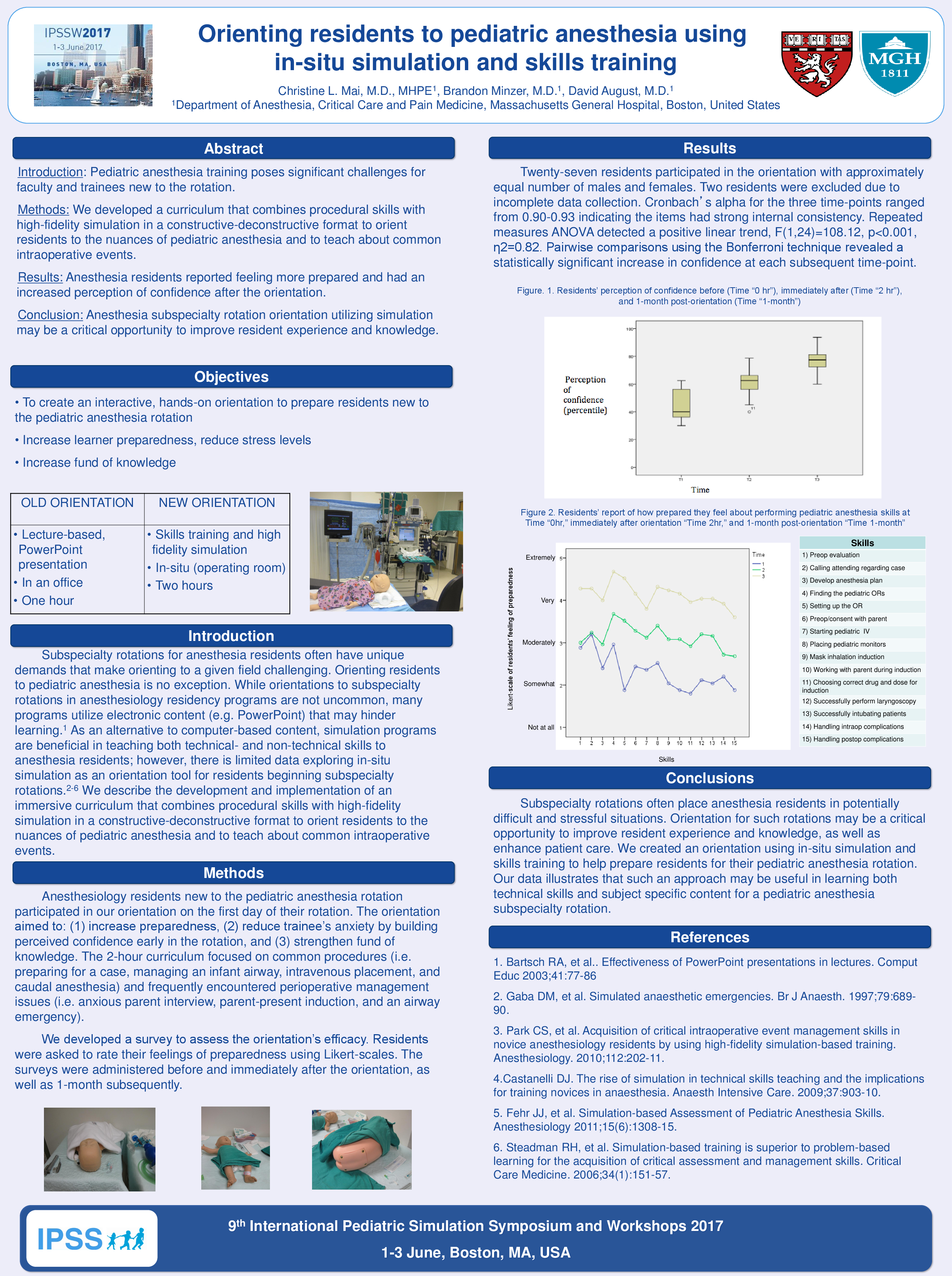Abstract
Introduction:
Subspecialty rotations for anesthesia residents often have unique demands that make orienting to a given field challenging. Orienting residents to pediatric anesthesia is no exception. While orientations to subspecialty rotations in anesthesiology residency programs are not uncommon, many programs utilize electronic content (e.g. PowerPoint) that may hinder learning.1 As an alternative to computer-based content, simulation programs are beneficial in teaching both technical- and non-technical skills to anesthesia residents; however, there is limited data exploring in-situ simulation as an orientation tool for residents beginning subspecialty rotations.2-6 We describe the development and implementation of an immersive curriculum that combines procedural skills with high-fidelity simulation in a constructive-deconstructive format to orient residents to the nuances of pediatric anesthesia and to teach about common intraoperative events.
Methods:
Anesthesiology residents new to the pediatric anesthesia rotation participated in our orientation on the first day of their rotation. The orientation aimed to: (1) increase preparedness, (2) reduce trainee’s anxiety by building perceived confidence early in the rotation, and (3) strengthen fund of knowledge. The 2-hour curriculum focused on common procedures (i.e. preparing for a case, managing an infant airway, intravenous placement, and caudal anesthesia) and frequently encountered perioperative management issues (i.e. anxious parent interview, parent-present induction, and an airway emergency).
We developed a survey to assess the orientation’s efficacy. Residents were asked to rate their feelings of preparedness using Likert-scales. The surveys were administered before and immediately after the orientation, as well as 1-month subsequently.
Results:
Twenty-seven residents participated in the orientation with approximately equal number of males and females. Two residents were excluded due to incomplete data collection. Cronbach’s alpha for the three time-points ranged from 0.90-0.93 indicating the items had strong internal consistency. Repeated measures ANOVA detected a positive linear trend, F(1,24)=108.12, p<0.001, η2=0.82. Pairwise comparisons using the Bonferroni technique revealed a statistically significant increase in confidence at each subsequent time-poi
Conclusion:
Subspecialty rotations often place anesthesia residents in potentially difficult and stressful situations. Orientation for such rotations may be a critical opportunity to improve resident experience and knowledge, as well as enhance patient care. We created an orientation using in-situ simulation and skills training to help prepare residents for their pediatric anesthesia rotation. Our data illustrates that such an approach may be useful in learning both technical skills and subject specific content for a pediatric anesthesia subspecialty rotation.
References:
1. Bartsch RA, et al. Comput Educ 2003;41:77-86
2. Gaba DM, et al. Br J Anaesth. 1997;79:689- 90.
3. Park CS, et al. Anesthesiology. 2010;112:202-11.
4.Castanelli DJ. Anaesth Intensive Care. 2009;37:903-10.
5. Fehr JJ, et al. Anesthesiology 2011;15(6):1308-15.
6. Steadman RH, et al. Critical Care Medicine. 2006;34(1):151-57.






